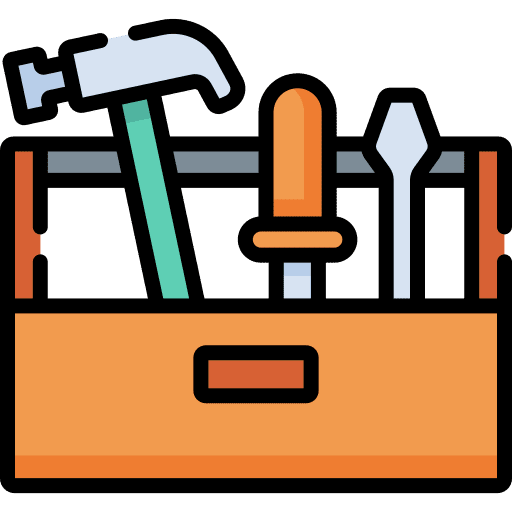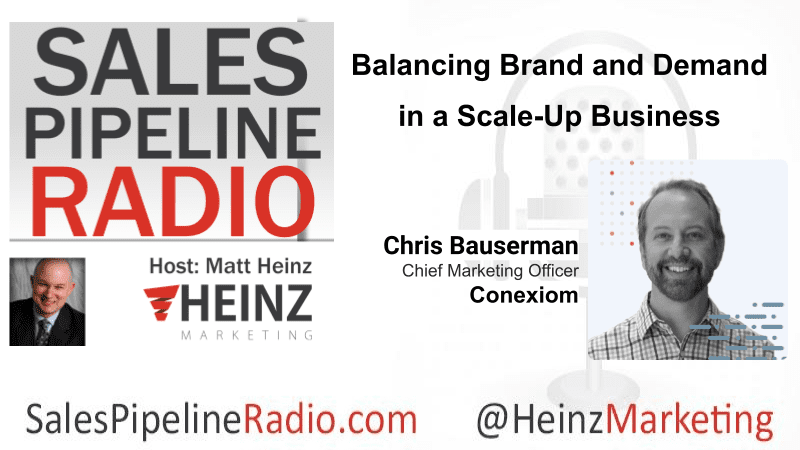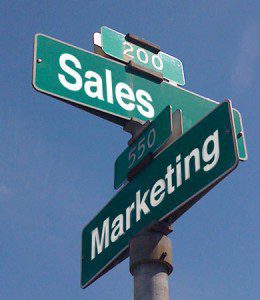How to Do ABM Without an ABM Tool- Part II

By Lauren (Dichter) Bensussen, Sr. Marketing Consultant at Heinz Marketing
Welcome to part II of How to do ABM Without an ABM Tool! In this installment, I’ll dive into each of the Need-to-Have Tools/Channels I listed in part I. Getting an ABM platform is the best way to ensure ABM is successful and sustainable, but if doing so isn’t in option, managing these tools in an intentional, coordinated way is the next best thing.
Let’s get into it!
Need-to-Have Tools (and their Channels):
CRM and Marketing Automation
So how exactly do a CRM and a MAP enable ABM at scale? In essence, the CRM helps you choose your key accounts for an ABM strategy, while the MAP enables you to execute that ABM strategy.
The CRM is the hub of all lead, contact, account, and opportunity records. And the MAP contains lead records too. Therefore, the health of your database—including the quality and accuracy of your marketing and sales data—directly affects your ability to carry out a successful ABM program.
Using data housed in your CRM, you can:
- Build an ICP based on accounts that have historically brought your company the greatest Lifetime Value, Annual Recurring Revenue, or any other metric you measure success by that can be gathered from the database
- Identify which accounts make you the least money but require significant effort, enabling you to adjust efforts accordingly
- Identify which accounts make you the most money, and then target those accounts with an ABM strategy
Some popular CRMs are Salesforce, HubSpot Sales Hub, ActiveCampaign, Zoho, Pipedrive, Microsoft Dynamics 365 Sales, and more.
Using data housed in both your CRM and your MAP, you can:
- See what customers buy, what content they consume, the nature of their conversations with sales reps, and more that helps you understand what problems, solutions, and themes your marketing efforts should focus on
- Set up automated workflows that are triggered by account-specific criteria, like an email nurture triggered by a key contact at a key account downloading a specific piece of content, or an email nurture triggered by a key contact at a key account reaching a pre-determined engagement score threshold
Some popular MAPs are Marketo Engage, HubSpot Marketing Hub, Pardot, Act-On, SharpSpring, Eloqua, and more.
Robust Data Intelligence Platform(s)
Market/sales intelligence software provide both marketing and sales teams with actionable data to fuel an ABM strategy. And ABM program sees the most success when the sales team is highly involved in it (but we’ll cover that further in part III of this blog post).
If you want to your target account planning to be as focused and organized as possible, it’s necessary to use a market/sales intelligence software. The robust and constantly updated person/account data within the intelligence platform enables your marketing team to get highly specific with its targeting.
By highly specific, I mean that with a platform like ZoomInfo, you can design both key contact and key account lists based on the following filters and sub-filters:
Contacts
- Contact Name or Email
- Buying Committee (this is something you’d set up in your settings)
- Job Titles
- Management Level
- Departments & Job Functions
- Many sub-departments and sub-job functions
- Contact Info
- All or any of…
- Mobile phone
- Direct phone
- Phone
- Supplemental email
- Business email
- Contact Accuracy Score (metric representing likelihood that a contact is employed where the database says they are and that the contact is reachable by email)
- Recent Changes
- New Hires Only
- Newly Discovered Only
- All or any of…
Companies
- Company Name/URL/Ticker
- Industry
- Company Industry (23 options)
- Sub-industries (over 160 options)
- Industry Keywords
- Industry Classification Code (NAICS or SIC)
- Company Description Keywords
- Company Industry (23 options)
- Headcount
- # of Employees (Min—Max)
- Employee Growth Rate (over past 1-2 years)
- Financials
- Company Revenue (Min—Max)
- Funding Dates (by funding round and period of time)
- Last Funding Amount (Min—Max)
- Total Funding Raised (Min—Max)
- Funding Round Type (15 options)
- Funding Investors
- Department Budgets (Min—Max)
- Marketing
- Finance
- Information Technology
- Company Attributes
- Alexa Rankings (Min—Max)
- Other Rankings (5 options)
- Certified Companies Only (the most dependable account profiles in the database)
- Type & Model
- Business Model
- All
- B2B
- B2C
- Company Type
- All
- Public
- Private
- Education
- Nonprofit
- Business Model
Phew… that’s quite the list! And those are just the main filters… there are also Sales Signals and My Accounts/Tags filters (but we’ll save that for later). If you want to get even more help targeting your key accounts, advanced intelligence plans provide location data, corporate hierarchy data, and departmental org-charts. It’s a B2B account-based marketer’s dream!
Access to one of these platforms means your marketing and/or sales teams get a 360-degree view of prospects, customers, accounts, and even opportunities. Therefore, a data intelligence platform should help you keep CRM records up to date in an efficient way, through automation and an integration with your CRM tool.
To sum it up, a great data intelligence platform provides “both the data and technology you need to create a more cohesive go-to-market strategy from start to finish.” And while there are various Data Intelligence Platforms on the market, my favorite—and the one I have the most experience with—is ZoomInfo.
Other popular data intelligence platforms are Groove, Adapt, Apollo.ai, AlphaSense, Klue, UpLead, and more.
Sales Engagement Platform
To keep an ABM program successful, salespeople need to be involved. In fact, Sales’ actions should strategically coordinate with Marketing’s actions.
At the start of an ABM motion, when Marketing is using various top-funnel and some mid-funnel tactics, Sales should be preparing to initiate meaningful conversations with target prospects. Building trusting relationships with key contacts via a sales sequence is the best way to do so.
There’s a lot you can do with a sales automation tool, but the key features for ABM are:
- Enabling sales reps to create automated email sequences targeted at key decision makers within in account.
- For an ABM campaign, Marketing will often step in and draft the copy for these email sequences so that the sales reps don’t have to, but more so that the tone, messaging, and content being shared is on-track with the previously planned focus of the ABM campaign.
- Enable sales reps to personalize at scale.
- Most sales automation tools use “Snippets”, which are customizable sections of copy. These can either be automated or manual.
- Examples of automated snippets are using the prospect’s first name, company name, industry, etc. in a specified location in the copy.
- An example of a manual snippet would be “[insert congratulatory commentary on any recent positive news about the company here]”. The platform would then require the sales rep to fill in the snippet before the email can be sent.
- Most sales automation tools use “Snippets”, which are customizable sections of copy. These can either be automated or manual.
- Enables automated nurturing through triggers.
- Sales reps can nurture their contacts at target accounts using triggered follow-up emails based on engagement and activity.
- Leverage Artificial Intelligence.
- Having AI embedded into their technology means these platforms can use natural language processing (NLP) to help teams analyze email engagement.
- Platforms then routes any email responses that take a positive tone to a specific inbox for sales reps to follow up on! It’s a great prioritization tool for busy sales reps.
Some popular sales engagement platforms are Outreach.io, Salesloft, Groove, and more.
And there you have it! This has been an explanation of the 3 Need-to-Have Tools/Channels for a successful ABM campaign. Are you convinced? Do you think something’s missing? Let us know in the comments section.
Next month, we’ll continue with Part III of How to do ABM Without an ABM Tool, which covers Nice-to-Have Tools/Channels. Until then, enjoy your Thanksgiving weekend (and leftovers) 😊.




